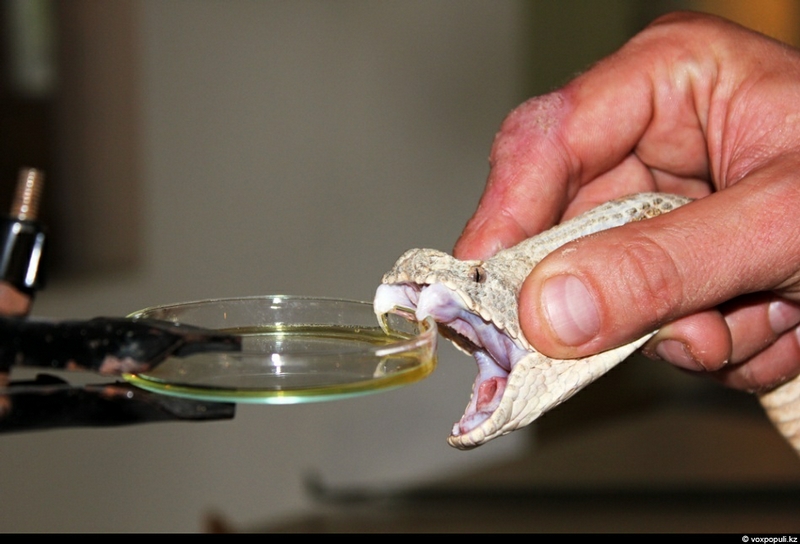
There is no such university in the whole world that can teach you the profession of a snake catcher. People learn it themselves, adopting the experience of others and gaining their own in practice. A snake catcher must understand the psychology of snakes, know all their habits, natural features, habitats. Let’s have a walk with one of such professionals from southern Kazakhstan.

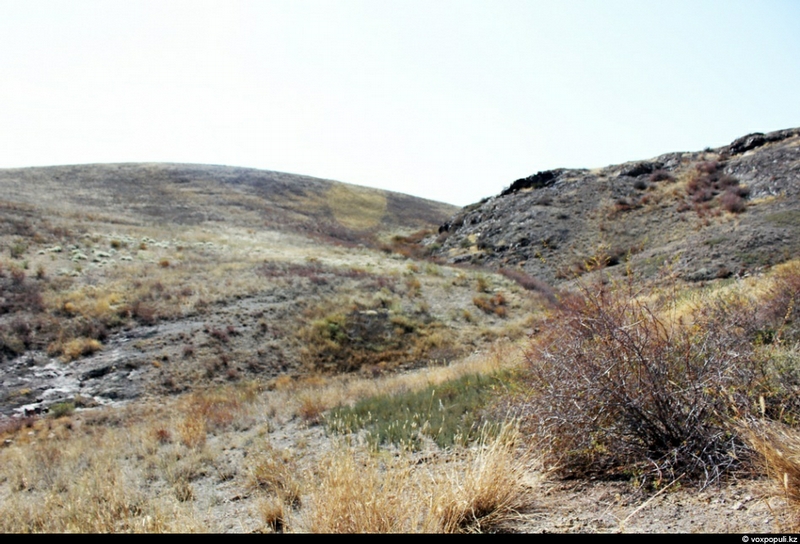
The southwestern side of Chardara reservoir is one of few places in Kazakhstan where live the specimen which a snake catcher is interested in.
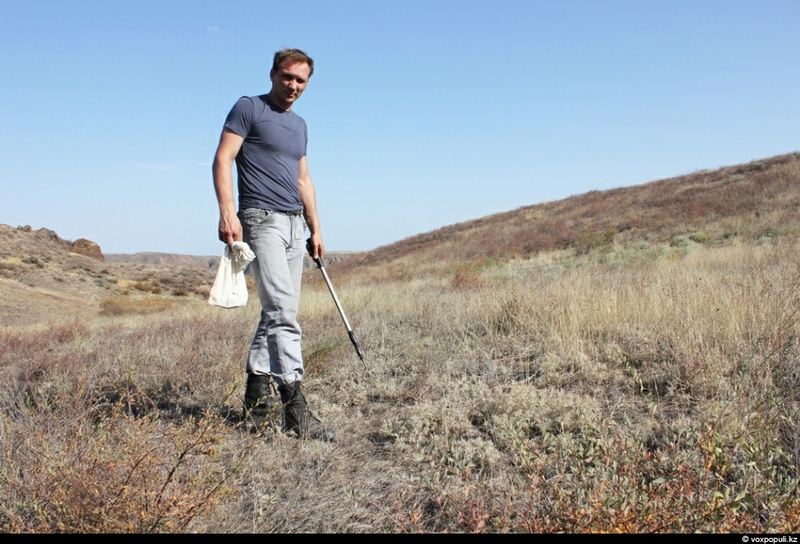
Meet Alexander, a serpentologist and a snake catcher with 15-year experience. He’s interested in blunt-nosed vipers and Central Asian cobras. Officially, these two specimen of venomous snakes are not put into the register of the reptilian fauna of Kazakhstan. This list is no longer topical as it was created in the far 70s.

Blunt-nosed vipers live on mountain slopes covered with shrubs, in rocky gorges, river valleys and cliffs along the banks of canals.
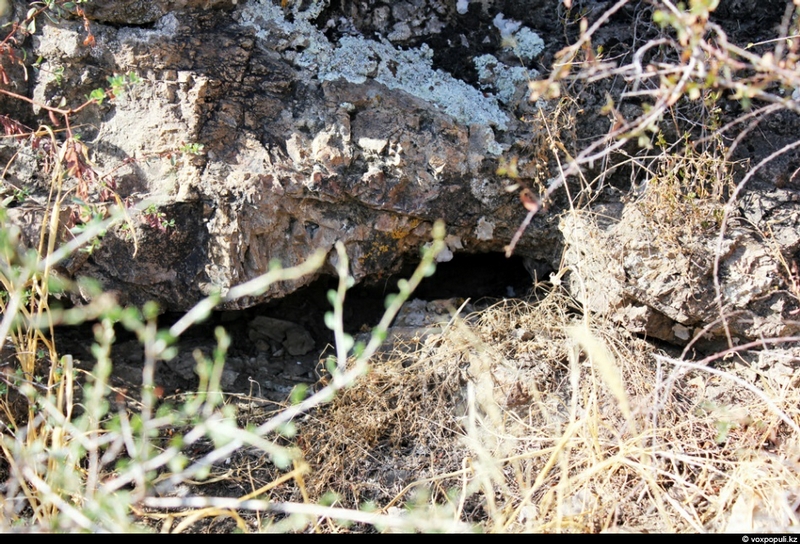
Sometimes these snakes gather in groups. There were cases when 10 snakes at once were found under a small stone.

This is a blunt-nosed viper, the largest member of the viper family in Kazakhstan’s fauna. It can reach almost 2 m in length and weigh up to 3 kg. An adult individual feeds on small animals such as field mice and lizards.

Having found a snake, Alexander cautiously approaches it and slowly turns its head to the side.
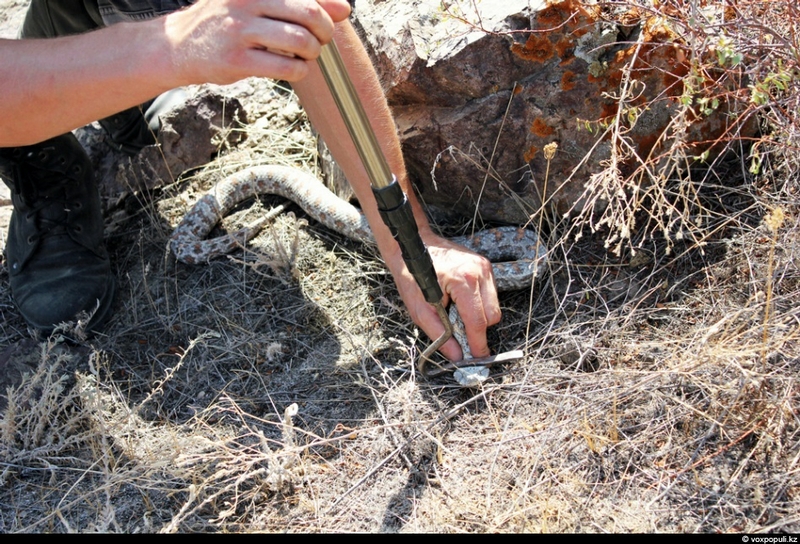
Without making any sudden movements, he squeezes its head with a special tool (the so-called “hook”) and gently takes it into a hand.

Since this is one of the most dangerous snakes in Kazakhstan, Alexander has to be extremely careful. In case of emergency, these snakes throw themselves at the enemy.
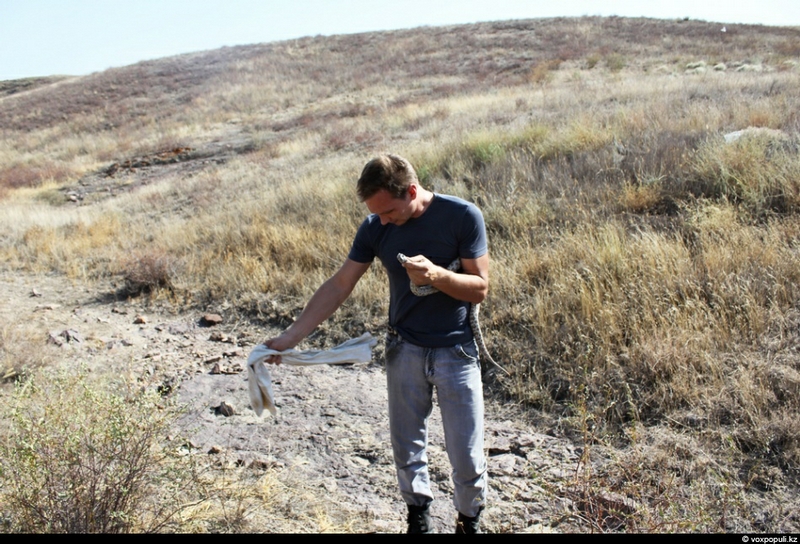
Once the snake is safely locked in his hand, Alexander puts it into a simple linen bag.
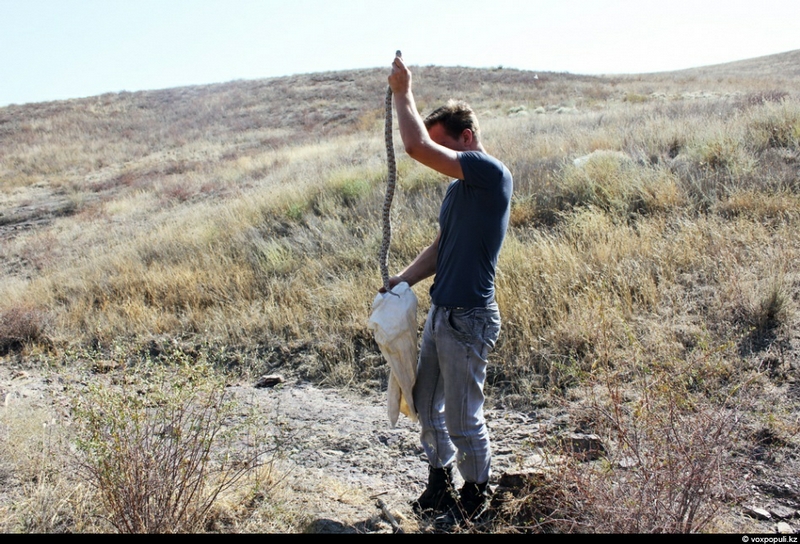
It requires some skill and the sequence of actions. One hand holds the snake and the other opens the bag. When the head of the snake comes abreast the edge of the bag, the animal is quickly thrown to the bottom.
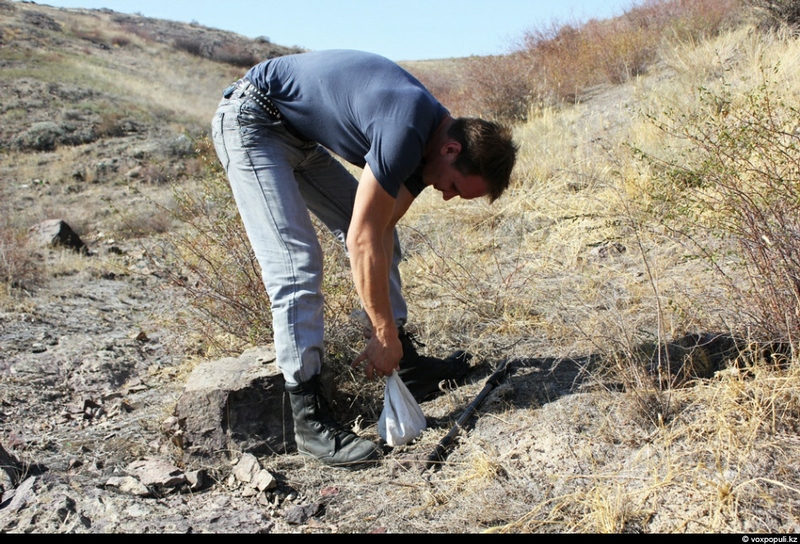
Then the bag is tightened. By the way, sometimes to put a small snake into a bag is more difficult than the large one.

A couple of hours later, the snake catcher finds the queen of snakes – a cobra. To be more precise, the Central Asian cobra. This is a rather large snake with an average length of 1.6 – 1.8 meters. Of the 10 species of cobras, the Central Asian cobra is the only one that can be found on the territory of the CIS.
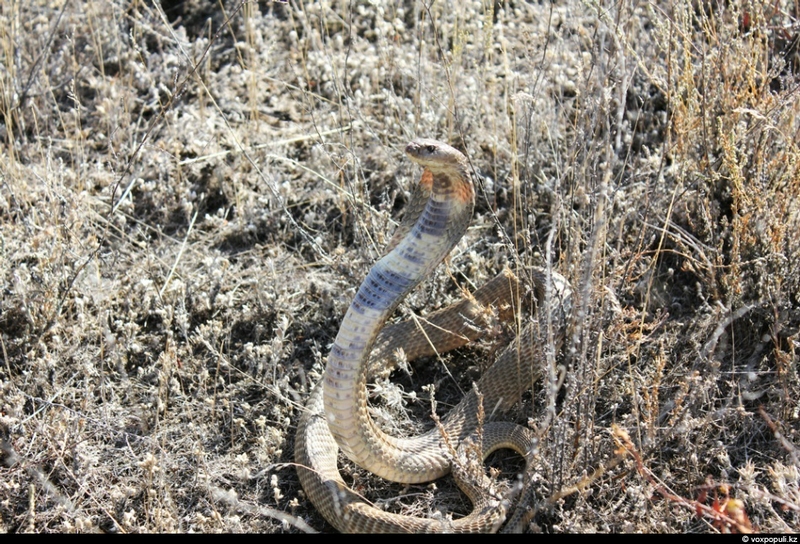
The threatening pose of the cobra is an inborn element that is passed to it genetically. Even newly hatched snakes lift vertically the front part of the body and widen their neck when they feel in the slightest danger. If the threatening pose is not enough, a cobra can make a false bite – it hits an opponent with its head without opening its mouth and in this way protecting its teeth from damage.
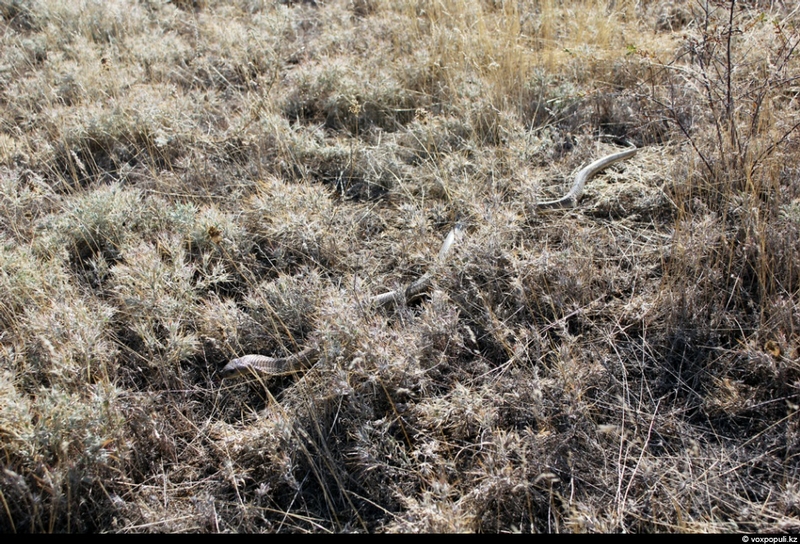
That’s why in natural conditions it happens very rarely when a cobra bites somebody. In general, most venomous snakes before attacking the enemy (a man or an animal that is not part of its diet) warn them using typical for this specimen methods. It may be either a loud hiss or the twitch of the tail.
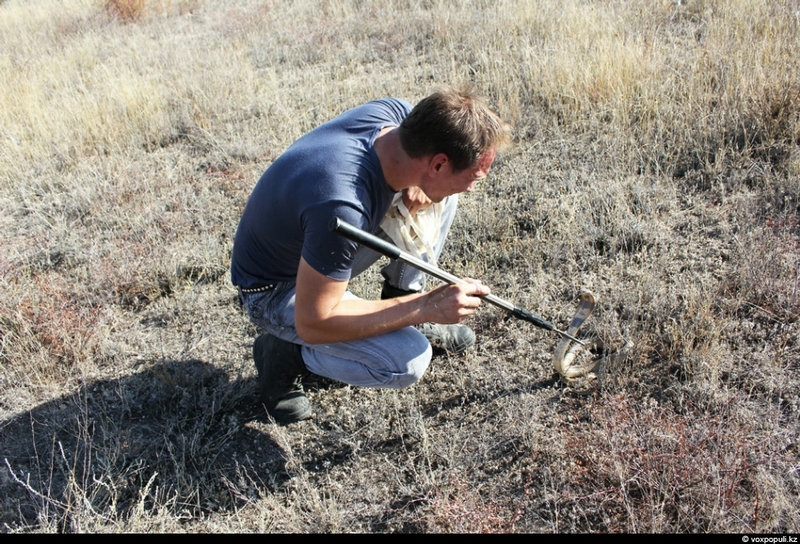
The habitat of Central Asian cobra is similar to the one of a blunt-nosed viper. It can be found in the mountains at an altitude of 1.500 m above sea level. It prefers hilly terrain with plenty of hiding places. The main diet of the cobra is amphibians, reptiles, rodents and small birds.

The very manner of its biting is rather peculiar. Usually, it seizes its prey and squeezes its jaw several times in order to be sure that its teeth are enough deep for injecting poison.
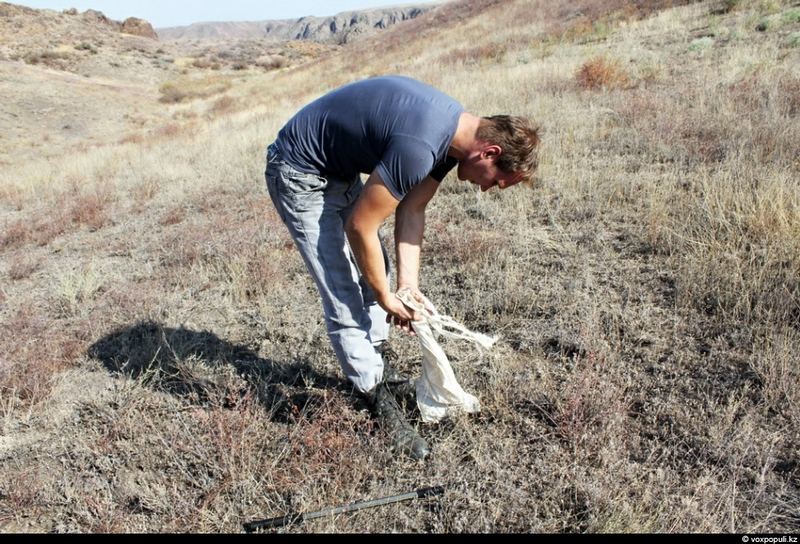
The poison of this snake is extremely strong. Besides the paralysis of nerves, it also destroys the blood. It has a neurotoxic effect, causing convulsions and the paralysis of respiratory tracts. However, deaths are recorded quite rarely.
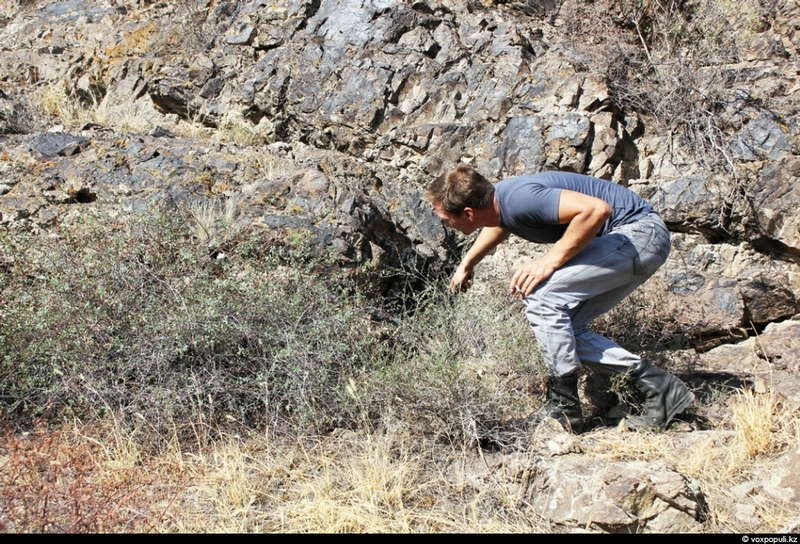
Before the beginning of the work, Alexander takes off light trainers and puts on combat boots. Safety is very important.
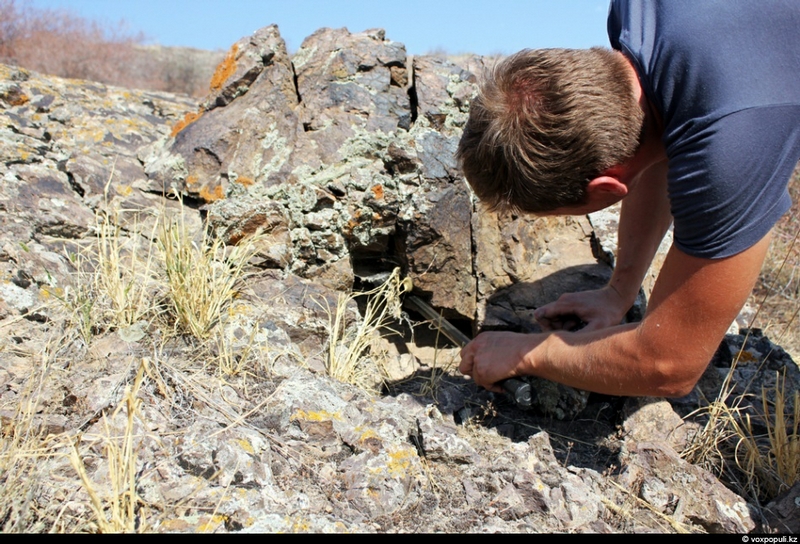
The number of snake catchers reduces day by day as the man who works with poisonous snakes is exposed to mortal danger every day.
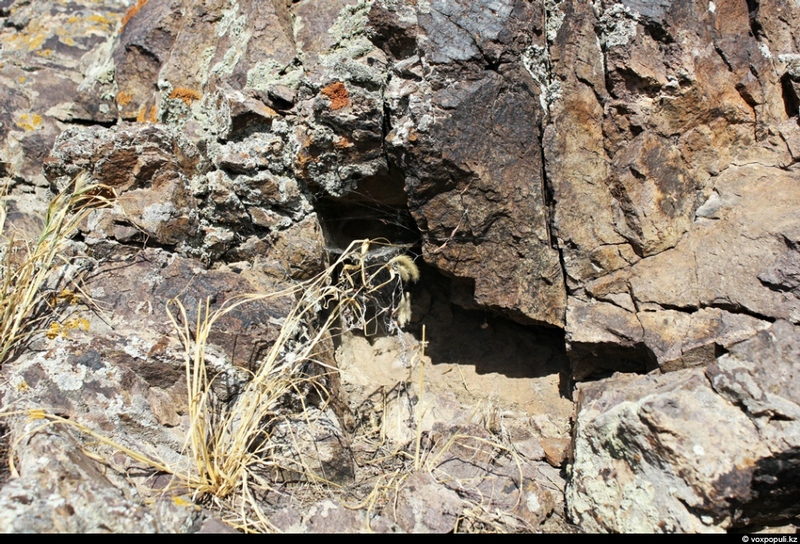
These are perfect places for snakes which hide themselves from unbearable heat in daytime.

With the help of the hook, an experienced snake catcher can catch almost any snake.
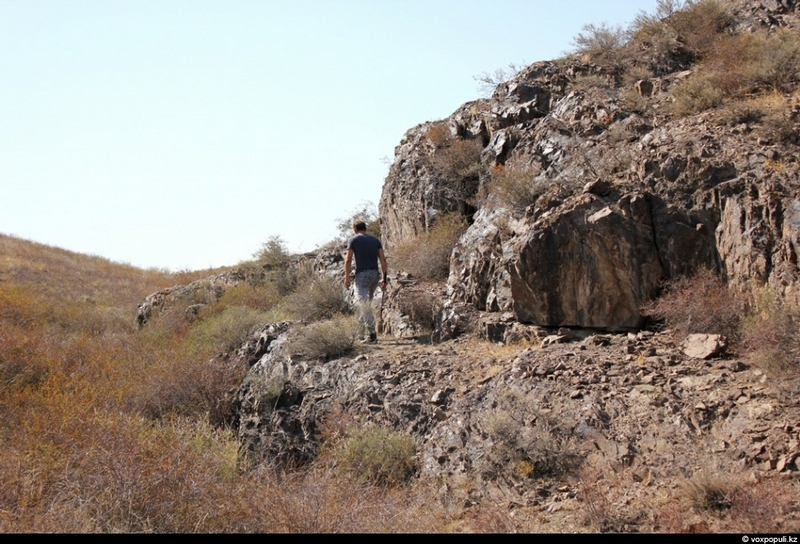
Caught snakes are put into special transport containers and delivered to a serpentarium. During the day Alexander managed to catch two blunt-nosed vipers and one cobra.
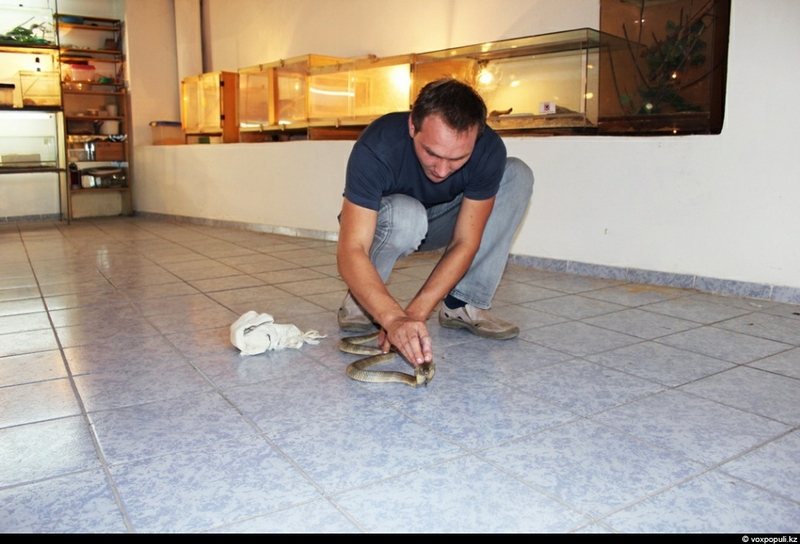
Before he puts the snake into a terrarium, he carefully takes the snake out of the bag and presses its head to the floor. Alexander skillfully evades its attacks. One hand holds the body of the snake, and the other fixes its head.
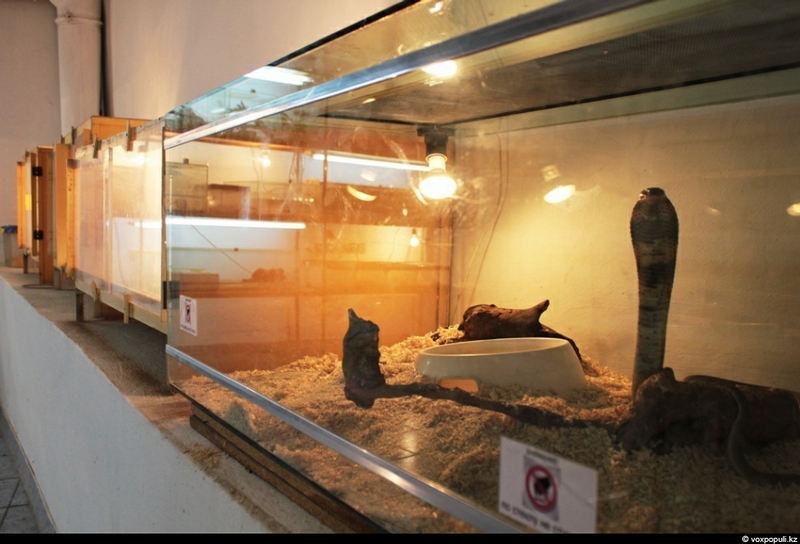
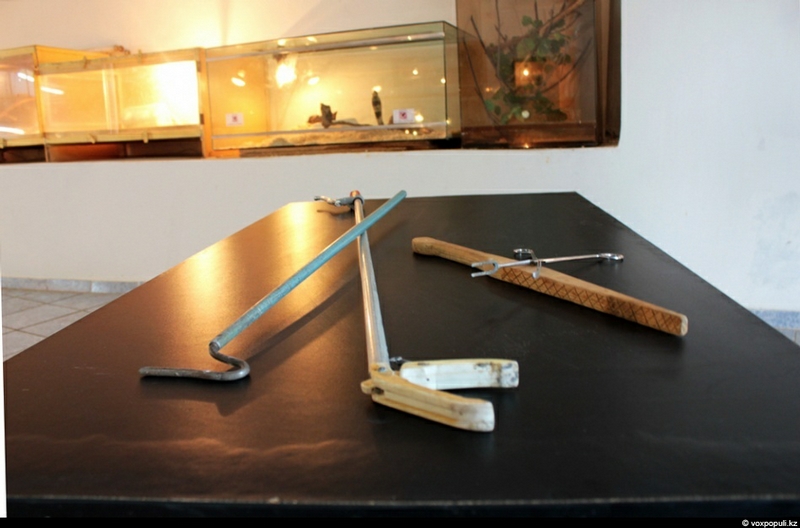
Tools that help you when working with snakes (from left to right):
- a hook
- a tool designed for removing a snake from a tree or a shrub
- a surgical instrument for grasping sterile instruments and dressings. It is used for catching small snakes.
- a fixation plate used in a laboratory
- a hook
- a tool designed for removing a snake from a tree or a shrub
- a surgical instrument for grasping sterile instruments and dressings. It is used for catching small snakes.
- a fixation plate used in a laboratory
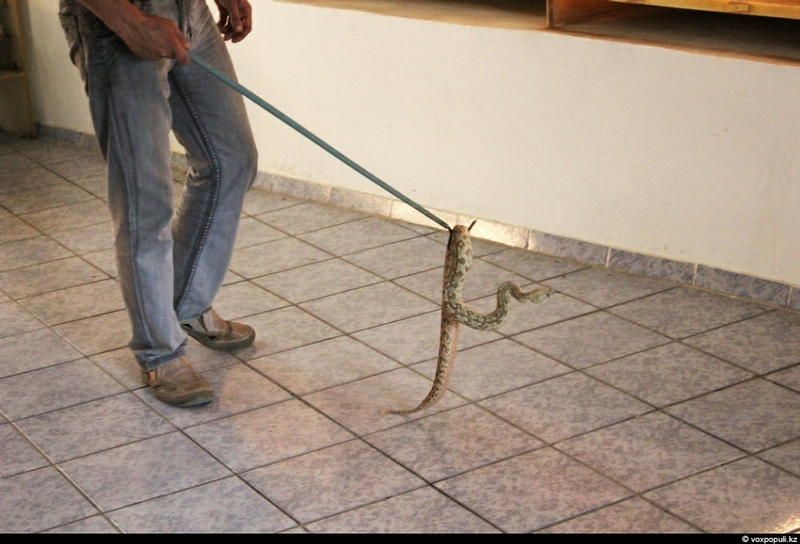
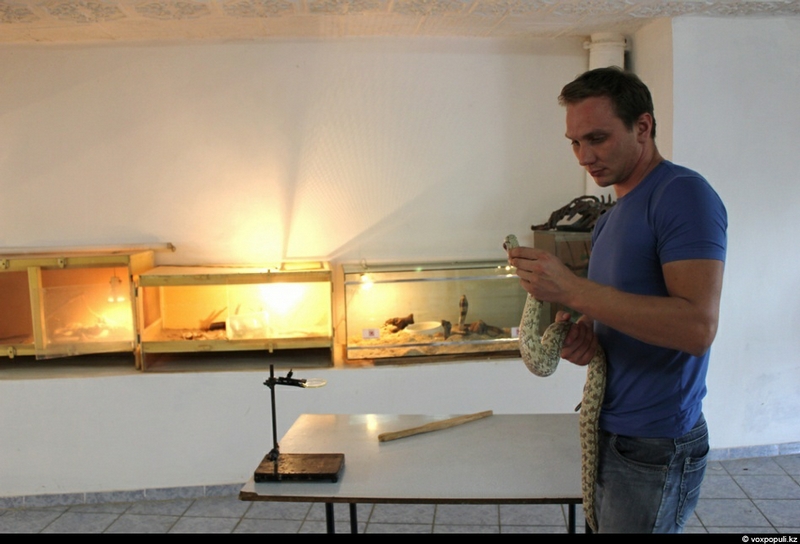
When a poisonous snake is delivered to the laboratory, the so-called milking begins. When poison is taken away from the snake, it’s released.
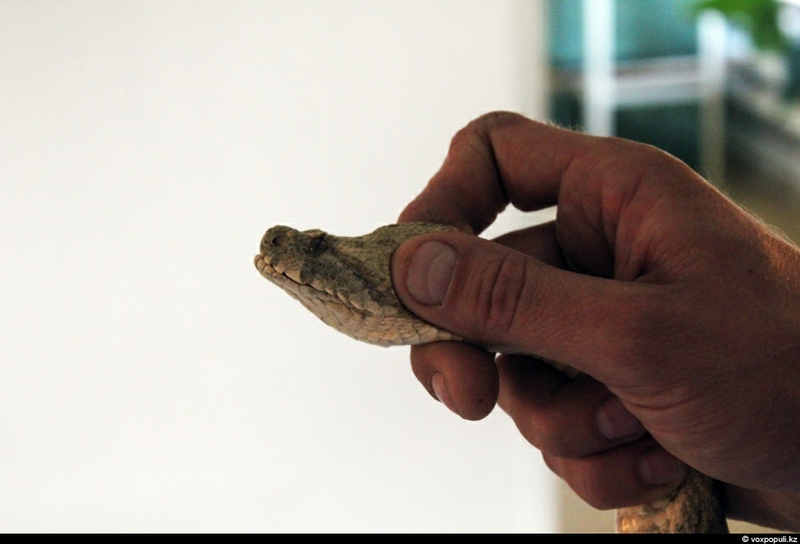
Poisonous snakes can be easily distinguished among others. Their head is broader than the body.
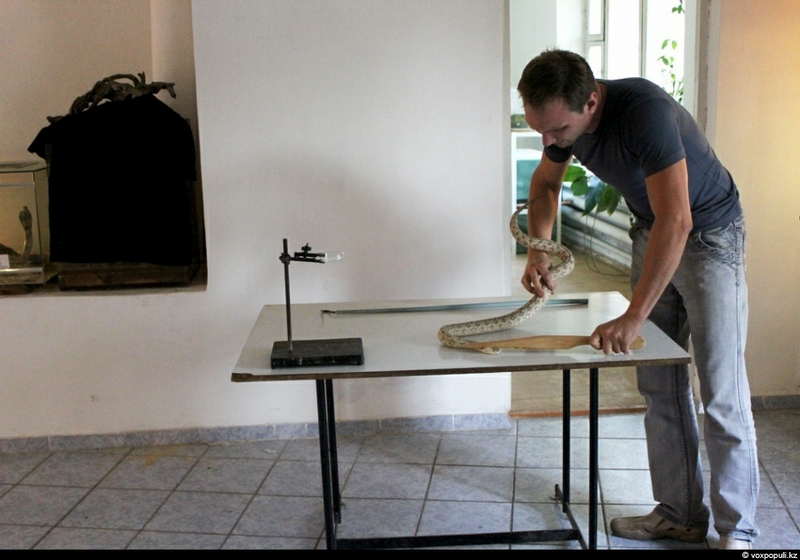
The powerful and muscular body of a large specimen is not so easy to hold in your hand.

The poison of a blunt-nosed venom is very toxic and inevitably leads to death. It is used to produce antitoxic serum and, more importantly, for the manufacture of various medicines.
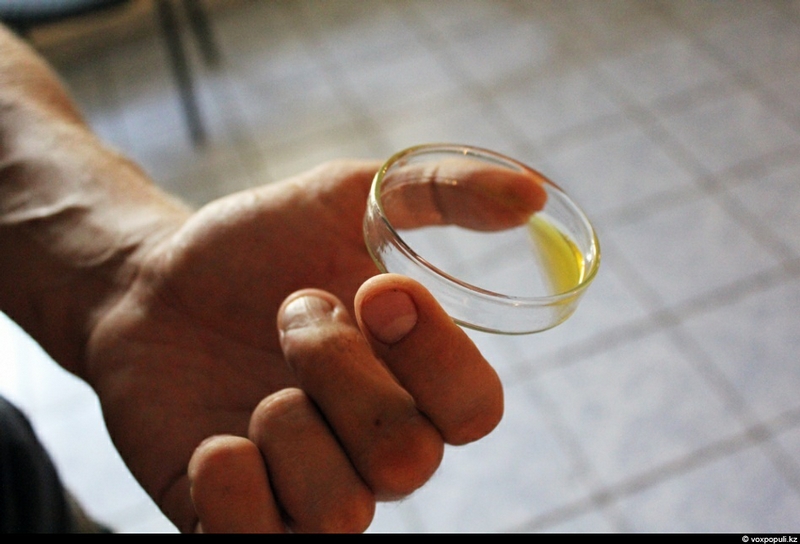
In serpentariums poison is collected once every 2-3 weeks. Small snakes give 20-40 mg, the large ones – 50-300 mg per one “milking”.
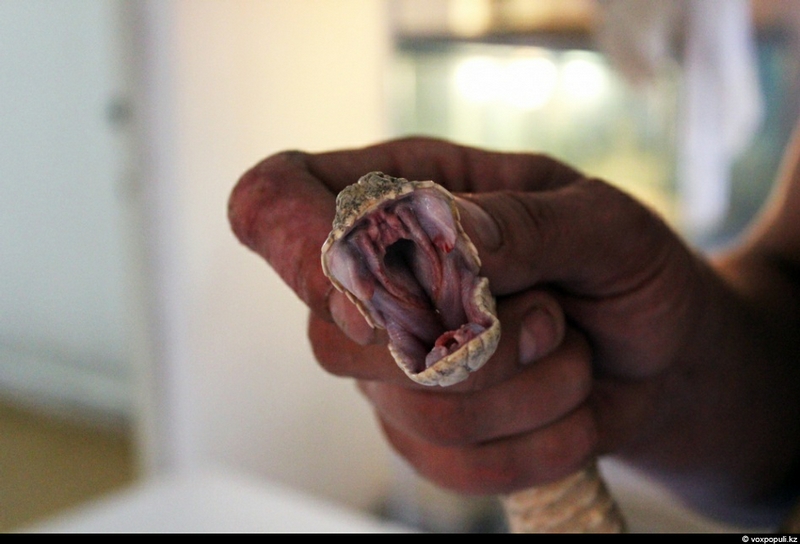
In conclusion, here is a piece of advice: when a man is bitten by a snake, he should be brought to the hospital as quickly as possible, even if it seems that the danger is past.
0 comments:
Post a Comment